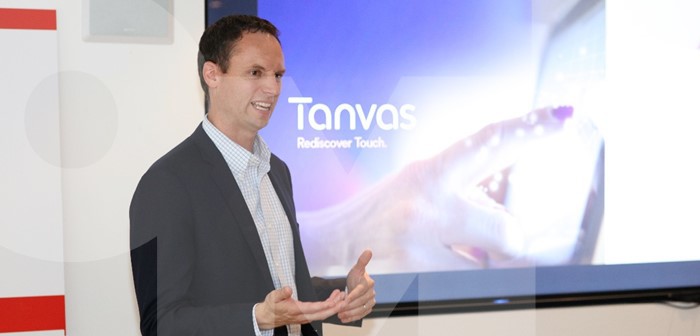Greg Topel, CEO of Tanvas, began by inviting us to think about a world without touch. It’s impossible – touch is fundamental to how we physically interact with the world.
Our sense of touch helps us confirm our expectations about the things we see around us. For example, the floor may look wet, but you won’t know for sure until you touch it – it could just be extremely shiny. When it comes to our digital interactions however, we haven’t yet come to form these expectations, despite daily use of so-called “touch” screens to interact with the digital world.
We may not yet feel like our touch screens are missing anything, but as Greg puts it rather philosophically, “the mind knows not what the finger wants”. It’s not the first time that sensory experiences have evolved to embrace a new sense. Flashback to the 1920s, and films were all silent – yet people loved them. They didn’t know that once they experienced the first “talkie” in 1927, there would be no going back. By 1930, silent films were obsolete. Expectations changed, and the same is likely to happen with touch screens soon.
So what makes Tanvas special? So far, haptic technology has involved using vibration to engage your sense of touch. The problem with this is that it isn’t localised, so it doesn’t actually feel like much except a vibration. While vibration has its place, Tanvas’ technology is different – you engage it, rather than the other way round. It uses static cling between your finger and the glass to mimic wave forms that exist in the real world on a pixel by pixel basis, enabling you to feel real textures, such as water or wood.
What does this mean for brands? It’s especially exciting for brands that want to create a full, multi-sensory brand experience. But if we begin to form touch expectations for our digital interactions, all brands will have to start thinking seriously about how they feel to the touch.




